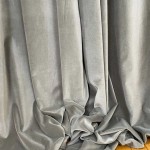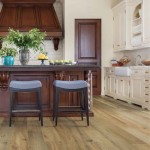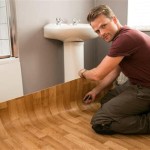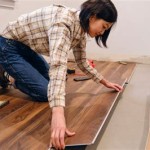Unfinished Oak Engineered Wood Flooring: A Comprehensive Guide
Unfinished oak engineered wood flooring presents a versatile and aesthetically pleasing option for a wide range of interior design projects. Combining the natural beauty of oak with the structural advantages of engineered construction, this flooring type allows for customization and long-term durability. This article explores the characteristics, benefits, installation considerations, and maintenance requirements associated with unfinished oak engineered wood flooring.
Engineered wood flooring is constructed from multiple layers of wood veneer adhered together, with a solid wood veneer, in this case oak, forming the top wear layer. The underlying layers often consist of plywood or high-density fiberboard (HDF), which provide stability and resistance to warping. This construction differs significantly from solid hardwood flooring, which is made from a single piece of wood. The engineered design offers improved dimensional stability, making it less susceptible to expansion and contraction due to changes in humidity and temperature. This feature makes engineered wood flooring a suitable choice for installation in basements and other areas where moisture levels may fluctuate.
Choosing unfinished oak engineered wood flooring provides homeowners and designers with maximum control over the final appearance of their flooring. The unfinished surface allows for custom staining, sealing, and finishing, enabling the creation of a unique and personalized aesthetic. This level of customization is a major advantage compared to prefinished flooring, which is limited to the manufacturer’s selection of colors and finishes.
Customization and Design Flexibility
The primary advantage of unfinished oak engineered wood flooring lies in its unparalleled customization potential. Unlike prefinished options, unfinished flooring arrives without any stain or sealant, presenting a blank canvas for homeowners and designers to realize their specific vision. This flexibility extends to a multitude of design elements, allowing for a cohesive and personalized interior space.
Stain Selection: The choice of stain color is paramount in determining the overall look and feel of the flooring. Unfinished oak readily accepts a wide range of stains, from light and airy natural tones to rich and dark hues. The oak grain pattern, which can vary depending on the cut of the wood, will interact with the stain to create a unique visual texture. Consider the existing and planned décor of the room when selecting a stain color. Light stains can brighten a space and create a more casual atmosphere, while darker stains lend a sense of formality and sophistication. Sample staining on a small, inconspicuous area of the flooring is highly recommended to ensure the desired color is achieved.
Finish Options: The finish applied to the stained flooring provides protection against wear and tear, while also influencing the sheen and texture of the surface. Common finish options include polyurethane, water-based finishes, and oil-based finishes. Polyurethane finishes are known for their durability and resistance to scratches and stains. Water-based finishes are lower in volatile organic compounds (VOCs) and offer a more natural, matte appearance. Oil-based finishes penetrate the wood fibers, enhancing the grain and providing a warm, rich tone. The choice of finish depends on the desired level of durability, aesthetic preference, and environmental considerations.
Sheen Level: The sheen level of the finish affects the amount of light reflected by the flooring and contributes to the overall ambiance of the room. Matte finishes offer a low-luster appearance, concealing scratches and imperfections more effectively. Semi-gloss finishes provide a moderate level of sheen, offering a balance between durability and aesthetics. High-gloss finishes are the most reflective, creating a dramatic and elegant look, but they also tend to show scratches and dirt more readily. Select a sheen level that complements the room's lighting and intended use.
Texture and Surface Treatment: Beyond staining and finishing, the surface of unfinished oak engineered wood flooring can be further customized through various treatments. Wire brushing removes the softer wood fibers, creating a textured surface that highlights the grain and provides a rustic aesthetic. Hand-scraping involves manually creating irregularities in the surface, adding character and a sense of age. Distressing techniques, such as adding dents and scratches, can further enhance the aged appearance. These treatments add individuality and visual interest to the flooring.
Installation Considerations
Proper installation is crucial for the long-term performance and appearance of unfinished oak engineered wood flooring. While engineered flooring is generally easier to install than solid hardwood, careful planning and execution are essential to ensure a successful outcome. The installation process typically involves acclimation, subfloor preparation, installation method selection, and the application of stain and finish.
Acclimation: Like all wood products, unfinished oak engineered wood flooring needs to acclimate to the environment in which it will be installed. Acclimation allows the wood to adjust to the temperature and humidity levels of the room, minimizing the risk of expansion or contraction after installation. The flooring should be stored in the room where it will be installed for several days, following the manufacturer's recommendations for acclimation time.
Subfloor Preparation: A level and stable subfloor is essential for a successful flooring installation. The subfloor should be free of moisture, debris, and any protrusions that could interfere with the flooring. Concrete subfloors should be tested for moisture content before installation. Uneven subfloors may need to be leveled using self-leveling compounds or plywood underlayment. Ensure the subfloor meets the manufacturer's specifications for flatness and stability.
Installation Methods: Engineered wood flooring can be installed using several methods, including floating, gluing, and nailing. Floating installations involve interlocking the planks together without attaching them to the subfloor. This method is relatively easy and quick, but it requires the use of an underlayment to provide cushioning and sound insulation. Glue-down installations involve adhering the flooring directly to the subfloor using a specialized adhesive. This method provides a more stable and permanent installation, but it requires more skill and effort. Nail-down installations involve nailing the flooring to the subfloor using a pneumatic nailer. This method is typically used for installations over wood subfloors. The choice of installation method depends on the type of subfloor, the desired level of stability, and the installer's skill level.
Sanding and Finishing: After installation, the unfinished oak engineered wood flooring will need to be sanded to create a smooth and even surface. Sanding helps to remove any imperfections or variations in height between the planks. The sanding process typically involves using multiple grades of sandpaper, starting with a coarse grit and gradually moving to finer grits. After sanding, the flooring is ready for staining and finishing. The stain should be applied evenly and allowed to dry completely before applying the finish. Multiple coats of finish may be necessary to achieve the desired level of protection and sheen. Follow the manufacturer's instructions for staining and finishing products.
Maintenance and Care
Proper maintenance and care are essential for preserving the beauty and longevity of unfinished oak engineered wood flooring. Regular cleaning and preventative measures can help to protect the flooring from scratches, stains, and other types of damage. Maintaining a stable indoor environment is also crucial for minimizing expansion and contraction. The following guidelines provide practical advice for maintaining your unfinished oak engineered wood floor.
Regular Cleaning: Regular sweeping or vacuuming is essential for removing dirt, dust, and debris that can scratch the floor's surface. Use a soft-bristled broom or a vacuum cleaner with a floor brush attachment to avoid damaging the finish. Avoid using vacuums with beater bars, as they can scratch or dull the finish. Damp mopping can be used to remove stubborn dirt or spills, but it is important to use a mild cleaning solution specifically designed for wood floors. Avoid using excessive water, as it can seep into the seams and cause damage. Always dry the floor thoroughly after mopping.
Preventative Measures: Taking preventative measures can help to minimize the risk of damage to the flooring. Use doormats at entrances to trap dirt and moisture. Place rugs in high-traffic areas to protect the finish from wear and tear. Use furniture pads under the legs of furniture to prevent scratches. Avoid wearing shoes with high heels or cleats on the flooring. Wipe up spills immediately to prevent staining. Avoid using harsh chemicals or abrasive cleaners, as they can damage the finish.
Humidity Control: Maintaining a stable indoor environment is crucial for minimizing expansion and contraction of the flooring. Wood expands in humid conditions and contracts in dry conditions. Excessive expansion and contraction can lead to gaps between the planks, cupping, or cracking. Use a humidifier during the winter months to maintain a relative humidity level between 30% and 50%. Use an air conditioner during the summer months to control humidity levels. Avoid exposing the flooring to extreme temperature or humidity fluctuations.
Refinishing: Over time, the finish on unfinished oak engineered wood flooring may become worn or damaged. Refinishing can restore the flooring to its original beauty. However, engineered wood flooring can only be refinished a limited number of times, depending on the thickness of the wear layer. Before refinishing, consult with a flooring professional to determine if refinishing is appropriate. The refinishing process typically involves sanding the existing finish, applying a new stain (if desired), and applying a new finish. Consider the thickness of the oak veneer before sanding, as excessive sanding can remove the veneer and expose the underlying layers. Properly maintaining and caring for an unfinished oak engineered wood floor will greatly increase its lifespan, while requiring costly repairs or replacements.

7 1 2 X 5 8 European French Oak Unfinished Square Edge Hardwood Flooring

Unfinished Engineered Hardwood Liberty White Oak Builddirect

Unfinished Engineered Oak Flooring Esl Hardwood Floors Boise Id

Unfinished 1 2 In White Oak Engineered Hardwood Flooring 7 4 Wide Ll

Wire Brushed Unfinished White Oak Flooring Hardwood Bargains Www Hardwoodbargains Com 5 Html

7 1 2 X European French Oak Unfinished Micro Bevel Hurst Hardwoods
.jpg?strip=all)
Wire Brushed Unfinished White Oak Flooring Hardwood Bargains Www Hardwoodbargains Com 5 Html

Oak Engineered Unfinished Wire Brushed Castle Collection Natural Planet Hardwood

White Oak Unfinished Glowry Collection

Unfinished Engineered Oak Wood Flooring








